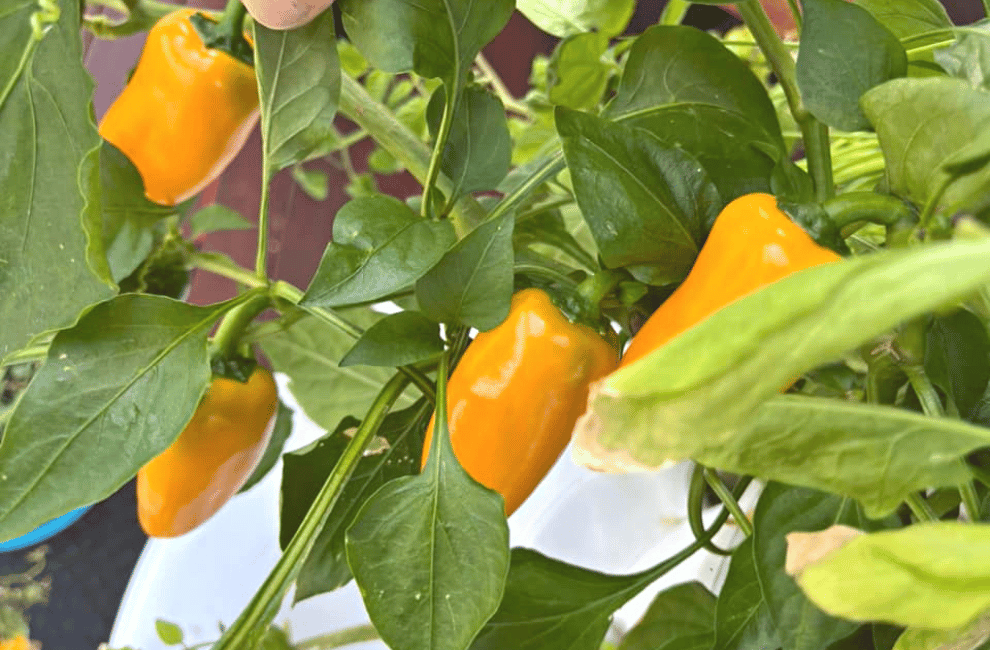
What is the difference of Aeroponics vs Hydroponics?

Do you know what the difference is between Aeroponics and Hydroponics?
Hydroponics is a method of growing plants without soil using nutrient-rich water. The word hydroponics is a Latin word meaning “working water”, whereby in the absence of soil, water is put to work to grow plants quickly and sustainably and plants are suspended in water and fed by water full time.
Aeroponics is when the plants are never engorged in soil or water, and even though many people have been enjoying growing vegetables and herbs in soil for centuries, aeroponic systems like the Airgarden have become increasingly popular due to their water efficiency, faster plant growth, a more sterile environment, space-saving capacity, environmental benefits and plant growing efficacy for more types of crops, harvest and vegetables.
With aeroponics, an offshoot of hydroponics, plant roots are suspended in air and sprayed with a nutrient-rich solution that recreates the process of growing in soil - a far more efficient use of water and nutrient feeding.
Hydroponics has been used to grow plants for centuries, and modern innovations have put hydroponics on the map as a crucial part of the world’s future agricultural system - but we're seeing more efficacy with aeroponics and the results aeroponics deliver with less waste, water usage and more harvested crops which grow faster.
Hydroponic systems can be versatile and can be used to grow a huge variety of plants, including vegetables, herbs, and flowers. Hydroponics systems have several advantages over traditional soil-based gardening, including the ability to control the nutrient and water supply to the plants, a reduction in pests and diseases, and the ability to grow plants in areas with poor or contaminated soil.
How Does Aeroponics Work?
Aeroponic systems provide crops with a much stronger and healthier root system and have a much higher potential performance than a standard hydroponic system with far faster growing harvested results - almost growing vegetables, herbs and leafy greens three times faster with less waste and water usage. The main difference is that aeroponics sprays nutrient rich solution droplets onto the roots of the plants - rather than to the roots - delivering a far better outcome than hydroponics.How Does Hydroponics Work?
Hydroponic systems replicate the same natural elements required to grow plants, but soil is replaced with an alternative material such as coco-coir or rockwool, and plants are supplied with a continuous flow of nutrient-rich water to their roots....
So what's the difference then?
When growing in soil, plants need to expend a lot of energy growing roots to find and access the water and nutrients contained in the soil. Comparatively, by putting plant roots in direct contact with the nutrients they require, and increasing access to oxygen, hydroponic and aeroponic systems typically grow plants faster, with stronger yields and superior nutritional quality than soil-based growing.
Hydroponic Gardening, Planting & Growing at Home
Whilst hydroponics is an excellent method for growing commercial produce at scale, hydroponic gardening at home is also a great way to save money by growing your own herbs, leafy greens and vegetables.
Virtually all plants can grow hydroponically at home whether you have a greenhouse, a backyard or a balcony, and because a hydroponic gardening system creates a more controlled growing environment, it can enable you to grow fresh produce all year round with very minimal maintenance when compared to soil-based growing.
There are two main options when setting up a hydroponic garden at home – for the serious green thumbs you can DIY one from scratch, or for an easier and more fail-proof option you can buy an end-to-end system.
Advantages of Aeroponic Gardens
Hydroponics is a highly efficient and effective method of growing plants, with many advantages over soil-based growing:
- Faster growth: In an aeroponics garden, nutrients are delivered directly to the plants roots, resulting in up to 3X faster growth
- Higher yields: Faster and healthier growth, combined with the fact aeroponics allows you to grow more plants per square meter, results in significantly higher yields
- Less water: aeroponics uses up to 95% less water than soil, making it a more sustainable way of growing
- Less susceptible to pests & diseases: As plants are kept in a controlled area and don’t use soil
- Less maintenance: aeroponics gardens require around 70% less maintenance than growing with soil
There are also few disadvantages of hydroponics that should be noted:
- Expensive set up: Compared to a traditional garden, a hydroponics system can be more expensive to acquire and build
- Vulnerable to power outages: As plants rely on a timed system, aeroponics systems do need to access consistent power to work
- Requires constant monitoring: aeroponics maintenance is simple, however does require regular checks such as monitoring EC levels and testing pH
Nutritional value of plants grown in water
There is a myth that plants grown hydroponically or aeroponically have less nutritional value or are less flavourful than plants grown in soil, but this couldn’t be further from the truth! If anything - plants are healthier and taste better.
Plants grown in water have the exact same physiology as those grown in soil, the only difference is how the plants access nutrients.
In hydroponics and aeroponics, nutrient salts are already refined and plants do not need to wait for them to break down to their basic form before accessing them. However, when growing with soil, plants are fed nutrients via manures and composts which must break down into nutrient salts before the plants can use them.
With hydroponics and aeroponics - the grower also has complete control over the nutrients the plants receive, usually resulting in better tasting produce ( such as leafy greens, vegetables, herbs), with higher nutritional value. Being in a controlled environment also usually means fewer pesticides are required to fight unwanted pests and maintain soil quality - and making your harvest fresh and clean and delicious.
Different Types of Hydroponic Systems
Although the core growing principles are the same (i.e. all are soilless and use liquid nutrients to grow plants), there are six main types of hydroponic growing systems:
- Aeroponics
- Deep Water Culture Systems (DWC)
- Nutrient Film Technique System (NFT)
- Wicking System
- Drip System
- Ebb & Flow System
To learn more about the different types of hydroponic systems click here.
Learn More About Aeroponics & Our Airgardens
The idea of growing your own herbs and veggies using an aeroponic system still intimidates some people, however as this article shows it is a simple and easy method of growing – often even more straightforward and cost effective than growing plants in soil.
At Airgarden, we provide the #1 aeroponic system purpose built for home growers, and would love to help you get started growing your own fresh, organic, healthy produce.
Check out by clicking here how it works or get in touch with us directly.







